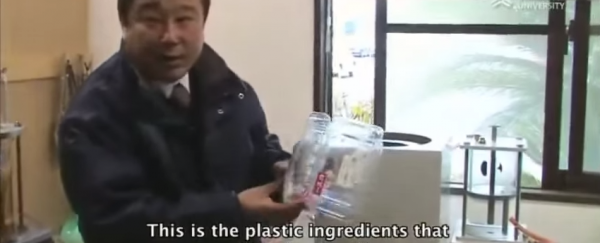
The video above, uploaded by YouTuber Ichini Shichi, shows the surprisingly simple process of converting plastic waste back into the oil from whence it came. In it, a Japanese man takes plastic containers, bottles and bags, shoves them all in a machine and then, hey presto, out comes diesel, kerosene and gasoline. It looks so easy it makes you wonder why we're not doing this all the time.
Well, there's a reason for that - the process is known as anhydrous pyrolysis, and despite how simple it looks, it's unfortunately not considered very effective because it uses up a lot more energy than it creates.
But that doesn't mean it's completely pointless. From an environmental perspective, recycling plastic waste is more efficient than turning it back into oil (and even better is stopping producing plastic altogether). But, as you can imagine, there's a whole lot of plastic out there that still goes un-recycled, and pyrolysis is way better than letting it sit in landfill or escape into oceans, while we continue to drill oil from Earth's crust.
Pyrolysis works by thermochemically breaking down a material at temperatures above 350 degrees Celsius in the absence of water. This not only physically melt down an object, but also changes its chemical composition so that, in the case of plastic waste, it reverts back into boiling liquid and eventually gas.
As the gas escapes from the machine, it enters a separate container filled with tap water, which cools it down again and converts it into oil. This oil has a higher cetane value and lower sulphur content to traditional diesel. But it can either be burnt as is, or processed further to produce diesel, kerosene and gasoline that can be used straight in your car, stove or motorbike.
And there you have it. The life-cycle of plastic is finally complete. It may not be the most energy-efficient process, but around 1 kg of plastic produces around 1 L of oil, whereas burning 1 kg of plastic released around 3 kg of CO2. So it's all relative.
Source: Digg
